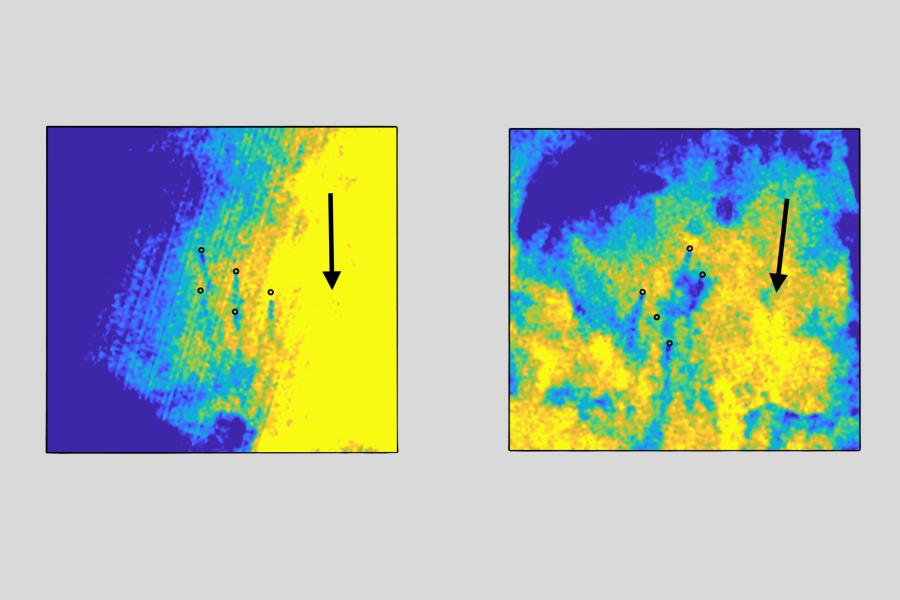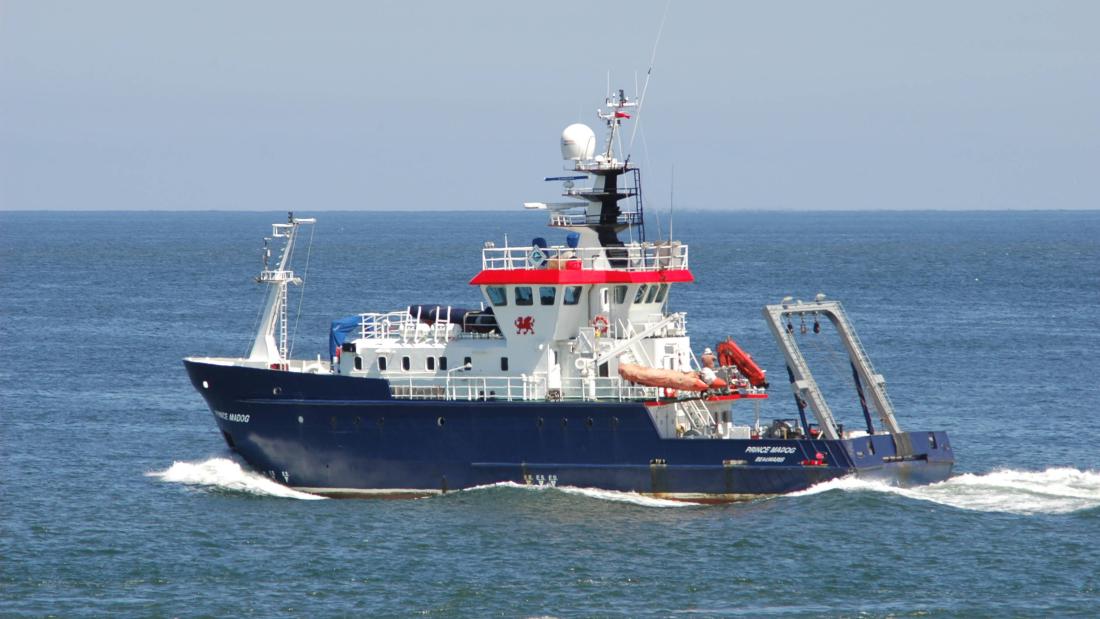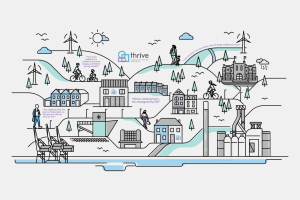A major new campaign is underway off the northeast coast of Scotland this summer to see if the next generation floating offshore wind farms might increase the productivity of UK seas. The campaign brings together leading marine scientists from institutions across the UK including the Universities of Liverpool, Bangor, East Anglia, Southampton and Hull, the Scottish Association for Marine Science, Marine Scotland and the National Oceanography Centre.
The two research ships, the RRS Discovery and Bangor University’s RV Prince Madog, supported by a fleet of underwater water gliders, will survey the waters around two prototype floating wind farms off eastern Scotland: Kincardine, owned by Dragados and operated by Grupo Cobra, and Hywind operated by Equinor. The scientists will be looking to see if extra turbulence and mixing by tidal currents flowing through floating wind farms can bring nutrients upwards from the deep to the plankton in the warm surface waters. Plankton are the base of the marine food chain, so increasing plankton productivity could benefit UK seas’ biodiversity and fisheries.
Over the past decade offshore wind has become a major part of the UK energy mix, and a major success story for UK industry. In 2024 Wind accounts for 30% of the UK’s electricity generation, with more than half of that taking place offshore. But as the areas of shallow seas suitable for wind farms become full, the industry is looking further offshore to meet the UK’s energy needs to help meet net zero.
The offshore move is a challenging engineering problem because of the greater water depths, resulting in the development of new floating wind technology in which the UK is a world leader.
The move to deeper water also means wind farms will be operating in a very different oceanographic environment - coastal seas where the water layers change with the seasons. These seas are some of the most biologically productive and diverse on the planet, as explained by David Attenborough in the Blue Planet TV series https://www.bbc.co.uk/programmes/b0074mlf .
Over the summer, these deeper waters form layers, with warm water on top of the cooler water underneath. The deep water contains the nutrients that surface layer plankton need to grow. The tidal flow past the wind farms generates turbulence which could bring some of the nutrients up into the surface water promoting plankton growth.

Professor Jonathan Sharples of the University of Liverpool, project leader and lead scientist aboard RRS Discovery, says: “This research is a great opportunity to assess the effects of the new floating wind farm technology on ocean productivity. Present theories suggest our rapidly warming ocean will become less productive, affecting biodiversity and fisheries – it will be very useful to know if the nutrients mixed upwards by floating offshore wind farms can offset some of that reduction.”
Bangor University oceanographer Dr Ben Lincoln, who is leading work on the RV Prince Madog, said: “During the summer 2023 heat wave we noticed something unusual around the floating wind farms. Whilst across much of the region experiencing the heat wave surface water temperatures were 4-5 °C higher than usual, in wakes downstream of the wind farms the surface water was much cooler. The cool wakes are caused by turbulence mixing up cooler deeper water to the surface. If the wakes are bringing cooler water to the surface, they will also be bringing nutrients which could be used by the plankton. These new observations will enable us to measure how much.”
In parallel with the ship-based work, an inter-disciplinary team of geoscientists, oceanographers and electrical engineers from the University of Southampton, are undertaking a novel analysis to measure the temperature of the sea using the marine high voltage cables that connect the windfarms to the national power grid.
Professor Justin Dix says: “Being able to extract the water temperature from the transmission cables will provide an unprecedented opportunity to track changes in the ocean’s temperature and stratification for the lifetime of the windfarms.”
This summer’s measurement programme is designed to assess the impact of floating offshore wind farms to help inform future developments so that they contribute to net zero goals while also protecting ocean health in a warming climate.
This work is funded by the Natural Environment Research Council (NERC).





